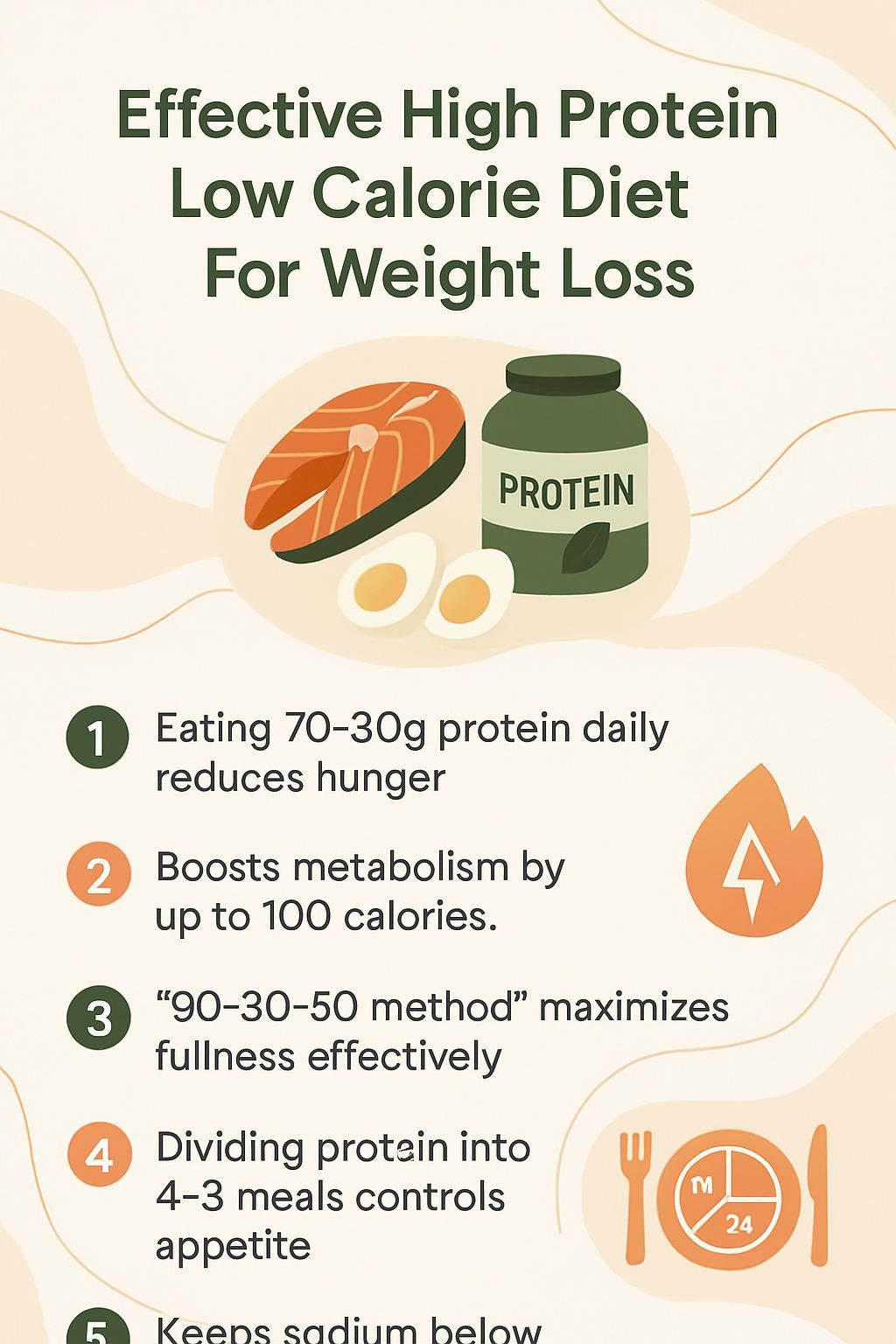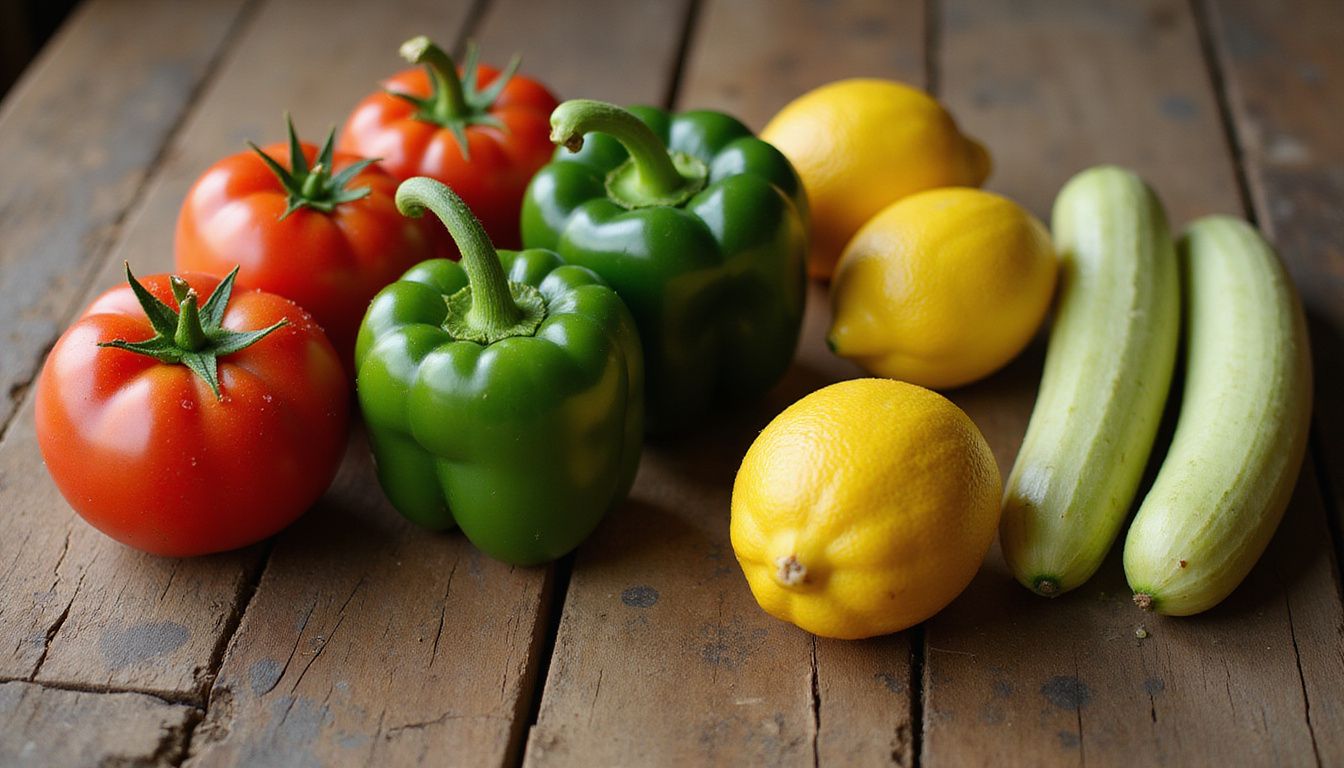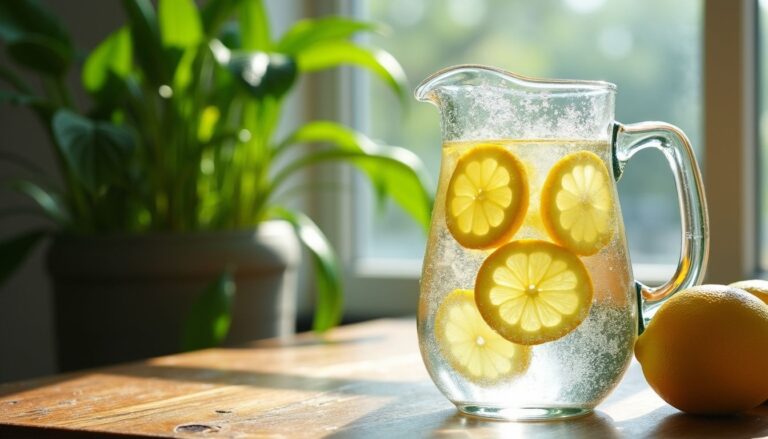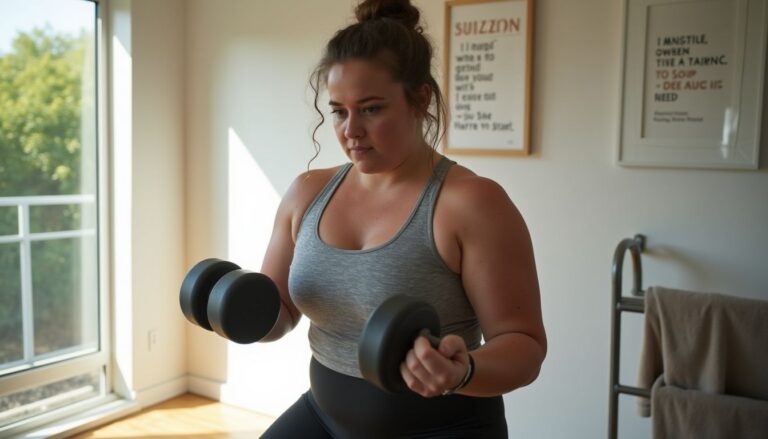Effective High Protein Low Calorie Diet For Weight Loss
Our Nutrition Assistant AI Suite will transform your body. You will lose fat, get toned, and build muscle. Gain confidence and optimal health.
If the scale will not budge, a high-protein diet with fewer calories can help. Research shows higher protein improves fullness, protects muscle, and supports steady weight loss. This guide explains how a high protein low calorie diet works, why it helps, and how to build an easy meal plan created by a dietitian. The right protein source at the right time can make progress feel simpler.
You will learn the core benefits, see food lists, and get a sample week of meals. Simple prep steps, snack ideas, and safety tips are included. Use these tools to set clear goals and reach them with less stress.
Key Takeaways
- Eating 70 to 90 grams of protein daily on a 1,200 calorie plan can reduce hunger, raise daily energy burn by about 100 calories, and help maintain muscle during weight loss (Mayo Clinic; Journal of Obesity & Metabolic Syndrome).
- High-protein plans that feature lean meats, fish, eggs, dairy, beans, tofu, and nuts increase fullness and improve fat loss compared with higher carb or low-protein diets in peer-reviewed reviews.
- Combining the “90-30-50 method” with at least 30 grams of fiber and healthy fats each day maximizes fullness while keeping total fat under 50 grams, a target many dietitians recommend.
- Spreading protein across four or five small meals supports appetite control and stable energy, a pattern backed by guidelines from the United States Department of Health and Human Services.
- Smart meal planning can keep daily sodium near 1,740 mg while meeting essential nutrient needs. Talk with your doctor before major diet changes, especially if you have a medical condition.

What is a High Protein Low Calorie Diet?

A high protein low calorie diet raises your protein intake while keeping calories modest. You focus on lean chicken, fish, eggs, edamame, and beans to reach at least 50 grams of protein per day, often much more. Plans reviewed by registered dietitians, such as Victoria Seaver, M.S., RD, use tools like the ESHA Food Processor database to estimate nutrients with care.
Many people aim for around 1,200 calories to support weight loss while still getting all essential amino acids, the building blocks of protein. Typical targets include less than 10 grams total fat and under 4.5 grams saturated fat per serving. For many animal proteins, cholesterol stays under 95 milligrams per 100 grams.
Meals are split into four or five smaller servings across the day. This pattern can curb appetite and support metabolism, according to Mayo Clinic and the United States Department of Health and Human Services. I tried a seven-day anti-inflammatory meal plan with egg whites at breakfast and chickpeas at lunch, and my energy stayed steady even with fewer calories.
Eating higher protein foods in a low-calorie meal plan can help you lose weight by making you feel satisfied longer, says Christa Brown, M.S., RDN.
With the basics covered, it helps to see how this style of healthy eating supports effective weight loss step by step.
What are the Benefits of a High Protein Low Calorie Diet for Weight Loss?
A high protein low calorie diet can support fat loss, protect muscle, and improve key health markers. Peer-reviewed research shows that raising protein while trimming calories helps weight management and may improve outcomes for your heart and metabolism.
How does it help reduce appetite?
Protein increases satiety, which is the feeling of fullness after eating. Meals higher in protein reduce hunger more than meals heavy in starch or sugar. That makes it easier to stick with a calorie goal during the day.
Studies show protein-rich foods like eggs and low-fat dairy increase fullness compared with carb-heavy meals. You can divide daily calories across four or five smaller meals and snacks. This spacing supports appetite control better than two or three large meals for many people.
The 90-30-50 method, 90 grams of protein, 30 grams of fiber, and 50 grams of healthy fat per day, helps manage cravings. When I used this method, late-night snacking dropped. Many people find they hit calorie targets more consistently with this approach.
How does it boost metabolism?
Protein has a strong thermic effect of food, which is the energy your body uses to digest and process food. Your body burns about 20 to 30 percent of protein calories during digestion, more than it burns from carbs or fats. For example, from 100 calories of protein, up to 30 calories may be used just to metabolize it.
Including lean meats, fish, and eggs through the day can raise daily energy burn and support a higher basal metabolic rate, which is the energy you use at rest. In studies, higher protein intake raised energy expenditure by up to about 100 calories per day compared with lower protein diets. Many people notice they feel warmer or more energized after higher protein meals.
High-protein meals can help increase calorie burn through the thermic effect of food, making weight loss more efficient for many adults.
How does it preserve lean muscle mass?
When you lose weight, you want to keep muscle. Eating enough protein helps prevent muscle loss during a calorie deficit. Many dietitians advise getting at least 70 grams of protein per day for muscle support while losing fat.
Choose high-quality sources, such as lean meats, eggs, and dairy. These foods supply amino acids that repair and maintain muscle tissue. People who follow higher protein plans tend to lose less muscle than those on low-protein diets, and they keep more strength while their body fat drops.
How does it promote fat loss?
Keeping muscle helps your body burn more calories, since muscle is active tissue. Adequate protein supports this, which directs more of your calorie deficit to fat stores rather than muscle. Research in the Journal of Obesity & Metabolic Syndrome reports that higher protein intake is linked with greater fat loss, especially around the waist.
The 90-30-50 method uses protein and fiber to control hunger and protect muscle, so fat loss can continue. Lean proteins like chicken and fish are rich in protein but low in saturated fat and calories. That improves fat burning compared with diets high in refined carbs or processed meat.
How does it enhance overall health?
Beyond fat loss, a high protein low calorie diet can strengthen your health. Lean proteins such as fish, plant proteins, and low-fat dairy support heart health. Adding more vegetables, fruits, and whole grains brings fiber, vitamins, and minerals that help your heart, gut, and bones.
Limiting foods high in saturated fat, like fatty beef, protects your heart and can lower LDL cholesterol. Guidance from the Mayo Clinic and the 2020-2025 Dietary Guidelines for Americans highlights whole, minimally processed foods for disease prevention and long-term health. After I switched to this style of eating, I noticed better energy and easier digestion. Staying hydrated, meeting your protein goal, and rotating different protein sources can also support your immune system.
These habits can lower risks tied to prediabetes, insulin resistance, and age-related muscle loss. Focusing on nutrient-dense meals helps you reach a healthy weight while feeling well.
Key Components of a High Protein Low Calorie Diet
A high-protein diet with fewer calories makes weight loss more manageable. Dial in your plan so you lose fat without losing important nutrients or strength.
Why is protein intake important?
Your body uses protein to build and repair muscle, especially during calorie restriction. Enough protein helps maintain muscle mass, which keeps your metabolism from slowing too much during weight loss.
Protein also helps you stay full. For example, 3 ounces of skinless chicken breast has about 26 grams of protein. A half cup of low-fat cottage cheese has about 12.4 grams. Plant proteins count too. A half cup of cooked lentils has about 9 grams, and 3 ounces of firm tofu has about 9 grams.
Getting enough protein also supports bone health and may reduce LDL cholesterol, a marker that raises heart disease risk.
How to balance macronutrients: carbs and fats
Balancing carbohydrates and fats with protein keeps energy steady and supports nutrition. Focus on quality, portions, and timing.
- Select wholesome carbs such as fruits, vegetables, whole grains, beans, and low-fat yogurt to deliver fiber and steady energy.
- Choose healthy fats from nuts, seeds, olives, olive oil, canola oil, seafood, and avocado. These provide essential fatty acids without excess calories.
- Use the 90-30-50 guide: about 90 grams protein, 30 grams fiber, and 50 grams healthy fat per day for satiety and balance.
- Adjust carbs to your activity level. Many plans land between 116 and 135 grams of carbs per day to fit a 1,200 calorie target.
- Limit saturated fat by favoring low-fat dairy over full-fat options. This supports heart health.
- Watch fat portions closely. Stay near 41 to 50 grams of fat daily, similar to Day 1 at 41 grams or Day 4 at 50 grams in the sample week.
- Aim for a macronutrient mix reviewed by a registered dietitian so your intake fits your age and sex.
- Keep meals simple. Build lunch or dinner around a lean protein and add a carb-rich salad with olive oil for healthy fat.
- Getting fiber from legumes increased my fullness and reduced constipation during my weight loss phase.
- Include fish twice a week for omega-3s, and swap packaged snacks for whole foods like olives or fruit. This also helps avoid bad breath that can show up on very high-protein meat-heavy diets.
This structure helps you build muscle while losing body fat, without relying on restrictive supplements or risking long-term health problems from extreme plans.
How to incorporate fiber-rich foods
Fiber supports fullness and gut health. Hitting 30 grams per day is a practical goal that helps weight loss feel easier.
- Choose whole grains like brown rice, quinoa, oatmeal, and whole wheat bread. These bring fiber and steady carbs.
- Add beans and legumes to soups, salads, or sides. Black beans, lentils, and chickpeas add protein and fiber, which also helps digestion.
- Include fruit at meals and snacks. Apples, berries, oranges, and kiwi deliver nutrients and fiber for satiety.
- Eat vegetables at every meal. Leafy greens, broccoli, carrots, and bell peppers raise fiber for very few calories.
- Use nuts and seeds in moderation for extra fiber without too many calories from fat.
- Plan for 22 to 39 grams of fiber per day with a mix of beans, grains, fruits, and vegetables as dietitians often recommend.
- Spread fiber across the day. Aim for 30 grams using the 90-30-50 method to reduce hunger on a lower calorie plan.
- Check nutrition labels and pick products with higher fiber percentages. This supports digestive health while you raise protein.
Last year I prepped overnight oats with chia seeds and added lentils to my salads. Those two steps helped me meet 30 grams of fiber most days, even on busy mornings.
Best High-Protein Foods for Weight Loss
High-protein foods keep you full and support lean muscle. These options make it easier to control portions and protect strength during weight loss.
What lean meats are best for weight loss?
Skinless chicken breast provides about 26 grams of protein per 3 ounces with very little saturated fat. Skinless turkey follows similar nutrition targets. Lean cuts of beef such as loin or round can also fit when trimmed and portioned well. These choices usually stay below 95 milligrams of cholesterol per 100 grams.
Using these options helped me stay full longer during my own plan, and I kept more muscle while dropping inches. Fish and seafood also fit a low-fat plan and deliver high-quality protein.
Why include fish and seafood?
Fish and seafood bring high-quality protein with fewer calories than many meats. A 3 ounce fish fillet generally supplies 17 to 20 grams of protein. Fat is usually low, and fish such as salmon or trout provide omega-3s that support heart health.
Rotating different proteins keeps meals interesting and balanced. Seafood also offers micronutrients like selenium and iodine. Swapping a few meat meals with fish can improve results for both weight and heart health.
Are eggs and egg whites good options?
Eggs are convenient and versatile. One large egg has about 6 grams of protein. Egg whites deliver most of the protein with very few calories and almost no fat, so they are useful when you need more protein without many extra calories.
Hard-boiled eggs work well for quick breakfasts or snacks. Many sample menus include scrambled egg whites with vegetables. I often swap two yolks for extra whites to meet my protein goal while keeping calories in check.
What dairy products support this diet?
Low-fat Greek yogurt contains more protein than regular yogurt, making it a strong base for breakfast bowls or smoothies. Four ounces of low-fat plain yogurt offers about 6 grams of protein.
Low-fat cottage cheese provides around 12.4 grams per half cup. Low-fat milk delivers about 4 grams per 4 ounces and supplies calcium for bones. Hard cheeses like provolone give about 7 grams per ounce. Choosing low-fat versions cuts saturated fat and calories while keeping protein high.
What plant-based foods are high in protein?
Plant proteins can anchor your high-protein diet too. Soy products are standouts. Three ounces of firm tofu has about 9 grams of protein, and 4 ounces of soy milk has about 3.5 grams. Tempeh and similar soy foods offer comparable benefits.
Beans and legumes help you meet daily targets. A half cup of cooked lentils provides about 9 grams. A half cup of cooked kidney beans offers about 7.7 grams. Nut butters and whole nuts also add protein, but watch portions since they are calorie dense. Two tablespoons of peanut butter contain about 7 grams, and almond butter has about 6.7 grams. One ounce of almonds gives roughly 6 grams.
Switching part of my snacks to tofu, beans, and nuts helped me stay full without going over my calorie target. Here is a quick summary you can scan before shopping.
| Plant-Based Food | Serving Size | Protein (g) |
|---|---|---|
| Firm Tofu | 3 oz | 9 |
| Cooked Lentils | 1/2 cup | 9 |
| Cooked Kidney Beans | 1/2 cup | 7.7 |
| Almonds | 1 oz | 6 |
| Peanut Butter | 2 tbsp | 7 |
| Almond Butter | 2 tbsp | 6.7 |
| Soy Milk | 4 oz | 3.5 |
Choose high-quality options, like unsweetened soy milk and no-sugar-added nut butters. Peer-reviewed studies suggest plant protein can support weight loss and healthy biomarkers when part of a balanced plan.
Meal Planning for a High Protein Low Calorie Diet
Planning ahead turns goals into daily wins. A simple structure helps you hit protein targets, keep calories in range, and avoid last-minute choices that do not fit your plan.
How should you structure your meals?
Split your daily calories into four or five meals to manage hunger and energy. Each meal should include protein, fiber, and balanced carbs and fats.
- Eat every three to four hours to keep energy steady and prevent dips in blood sugar.
- Add a quality protein at each meal, such as chicken, fish, eggs, yogurt, tofu, or beans. This preserves muscle and boosts fullness.
- Include fiber-rich foods like leafy greens, broccoli, lentils, or whole grains for longer-lasting satiety.
- Favor whole carbs, and skip refined sugars that can spike blood sugar.
- Use healthy fats like avocado, olive oil, nuts, or seeds while staying within your calorie target.
- Plan snacks using protein-rich choices, for example low-fat cottage cheese or a small handful of almonds.
- Rotate breakfast staples such as eggs or Greek yogurt, then build lunches and dinners with lean proteins and vegetables.
- Use measuring cups or smaller plates to control portions without guesswork.
- Space meals evenly to support appetite control and metabolism. This pacing made my own transition smoother last summer.
- Choose high-quality proteins to support muscle repair and fat loss.
- Stick with a consistent pattern, and change up your proteins and vegetables weekly to avoid boredom.
What are some tips for meal prepping?
Meal prep makes your plan easier, cheaper, and more consistent. A few hours upfront can save you many decisions during the week.
- Prepare the Chicken Quinoa Bowl with Olives and Cucumber for lunches on Days 2 through 5.
- Hard-boil eggs at the start of the week for fast breakfasts on Days 4 and 5.
- Batch cook proteins like salmon, chicken breast, chickpeas, or edamame to use across multiple meals.
- Store meals in airtight containers in the fridge so they are ready when you are hungry.
- Portion meals before storing to prevent overeating and improve tracking accuracy.
- Follow a simple prep guide for shopping lists and cooking steps to save time.
- Prep snacks such as plain yogurt, cut vegetables, or a measured handful of nuts for grab-and-go options.
These habits lower daily stress and support a steady routine.
Why is portion control important?
Portion control keeps you near a 1,200 calorie target. Even healthy foods can slow weight loss if servings are too large. Dietitians stress measuring portions for accuracy.
Consistent portions help you reach the daily protein range of 64 to 90 grams while keeping carbs and fats balanced. Tracking servings prevents nutrient gaps or excess calories. With clear portions, your high-protein meal plan becomes easier to follow and repeat.
Sample 7-Day High Protein Low Calorie Meal Plan
This sample week shows how a high-protein, low-calorie plan can look in real life. Meals are simple, repeatable, and built around quality protein and fiber.
What does Day 1 look like for meals and snacks?
Breakfast: 6 ounces of nonfat Greek yogurt with 1/2 cup berries and 1 tablespoon chia seeds. This delivers about 18 grams of protein and 5 grams of fiber.
Snack: one hard-boiled egg and five almonds. Lunch: 3 ounces grilled chicken breast, 1 cup cooked quinoa, and roasted broccoli with lemon. Protein moves toward 30 grams, while quinoa and broccoli add fiber.
Snack: low-fat cottage cheese with cucumber slices. Dinner: 4 ounces baked salmon, 1 cup steamed green beans, 1/2 baked sweet potato, and a light drizzle of olive oil.
Totals: about 1,200 calories, 77 grams protein, 135 grams carbohydrates, 22 grams fiber, and around 41 grams fat while staying under 1,600 mg sodium. Following a clear plan like this kept my portions steady and my energy even.
What does Day 2 look like for meals and snacks?
Day 2 targets 1,228 calories, 64 grams protein, 130 grams carbs, 27 grams fiber, 50 grams fat, and about 1,315 mg sodium. Breakfast: Greek yogurt with berries and chia. Lunch: Chicken Quinoa Bowl with Olives and Cucumber, a reliable meal-prep pick.
Snack: a small handful of almonds or a cup of cottage cheese. Dinner: grilled salmon with roasted vegetables and a side of brown rice for whole grains and healthy fats. You balance plant and animal proteins across meals, which supports muscle and controls hunger.
Fiber from vegetables and grains supports digestion and helps you feel satisfied. Meal prepping the lunch bowl makes weekday choices easier and more consistent.
What does Day 3 look like for meals and snacks?
Day 3 continues the pattern with about 1,212 calories and 47 grams of fat. Breakfast: Greek yogurt with berries and chia for a strong start. Snack: reduced-fat string cheese or cottage cheese to keep energy steady.
Lunch: grilled chicken breast on leafy greens with quinoa. This provides amino acids and lasting fullness. Afternoon snack: hummus with veggie sticks to add fiber without overshooting carbs, which land near 112 grams.
Dinner: baked cod with roasted Brussels sprouts. Sodium stays near 1,265 mg. Fiber remains about 27 grams to support digestion. Portions stay consistent so you promote fat loss while protecting lean tissue.
What does Day 4 look like for meals and snacks?
Start Day 4 with a hard-boiled egg for a quick, high-protein breakfast. Lunch repeats the Chicken Quinoa Bowl with colorful vegetables and whole grains for steady energy and fullness.
Snacks: Greek yogurt or cottage cheese for extra protein. The day totals about 1,225 calories, 81 grams protein, 116 grams carbs, 50 grams fat, and around 1,502 mg sodium. Each meal uses quality, evidence-backed choices for safe and effective weight management.
What does Day 5 look like for meals and snacks?
Day 5 totals about 1,215 calories. Breakfast: a hard-boiled egg for a quick protein boost. Mid-morning snack: a small handful of nuts for satiety.
Lunch: Chicken Quinoa Bowl. Afternoon snack: Greek yogurt with whole grain crackers or cut vegetables. Dinner: baked fish with steamed broccoli and brown rice for a balanced plate.
Carbs sit at the lowest point for the week at about 106 grams, while fats rise to about 58 grams. Sodium reaches roughly 1,740 mg. You still reach around 74 grams protein and 27 grams fiber from a mix of vegetables, nuts, dairy, and whole grains.
What does Day 6 look like for meals and snacks?
Day 6 has the highest protein of the week at about 90 grams and about 1,217 calories in total. Meals include both animal and plant proteins, for example grilled chicken at lunch and a hearty lentil salad at dinner.
Snacks can include Greek yogurt or vegetables with hummus to help you hit a high fiber goal of around 39 grams. Fat intake drops to about 39 grams, and sodium stays near 1,278 mg. Carbohydrates reach about 136 grams from whole grains and beans. Keeping snacks simple, like boiled eggs or cottage cheese, makes this day easy to follow.
What does Day 7 look like for meals and snacks?
Day 7 closes the week with about 1,208 calories and 70 grams protein to protect lean mass. Carbohydrates reach the weekly high at around 144 grams, and fiber lands at about 30 grams to support digestion.
Meals pair lean proteins like grilled chicken or low-fat cottage cheese with whole grains such as quinoa or brown rice. Snacks can be Greek yogurt with berries or vegetables with hummus. Fat totals about 41 grams, and sodium is close to 1,743 mg. You finish strong with balanced nutrition and practical meals you can repeat.
Is a High Protein Low Calorie Diet Safe?
Most healthy adults can follow a higher protein plan safely. People with kidney disease, diabetes, or other conditions should talk with a clinician first. This article is educational, not medical advice.
What are the potential risks and considerations?
Some people notice bad breath, headaches, or constipation if fiber is too low. Many restrictive meal plans skimp on vegetables and beans, which can create these issues.
Choosing meats high in saturated fat may raise LDL cholesterol and heart disease risk, according to recent reports from the Mayo Clinic. Extra protein also produces waste products your kidneys must clear. Anyone with kidney problems should get medical guidance before starting. Too few carbs can leave out key nutrients that support energy, mood, and performance.
I struggled with constipation early in my high-protein phase until I added more vegetables and beans. That change helped within a few days.
How can you ensure nutritional balance?
Planning for variety protects your health while you lose weight. These steps cover the bases.
- Choose nutrient-rich proteins like soy, beans, lentils, nuts, seeds, fish, lean meats, low-fat dairy, and egg whites.
- Include fiber at every meal from vegetables, fruits, whole grains, and legumes to support digestion and fullness.
- Limit saturated fat to support heart health.
- Use healthy fats from nuts, seeds, olives, olive oil, and avocados to absorb fat-soluble vitamins.
- Balance macronutrients with whole-grain carbs and healthy fats while meeting protein goals.
- Adapt the plan for allergies, preferences, or schedule changes, and consider meeting with a registered dietitian.
- Check with your healthcare provider for personalized advice if you have medical concerns.
- Weigh or measure portions to prevent overeating. This kept my own servings on track during the first month.
Peer-reviewed studies support a varied, nutrient-dense approach for safe, steady progress.
Tips for Success on a High Protein Low Calorie Diet
Small daily habits often make the biggest difference. These practical tips help you stay consistent and feel better as you lose weight.
Why is staying hydrated important?
Water supports metabolism, digestion, and fullness. Drinking water before meals can help you eat fewer calories. It also beats sugary drinks, which add calories without filling you up.
Higher protein intake raises the need for fluids because your kidneys must clear more waste. Dietitians often point to hydration as a key step for avoiding constipation and fatigue. Keeping a water bottle nearby helped me hit my fluid goals and stay alert.
How to effectively track your food intake
Use a trusted app to log meals and snacks. The Mayo Clinic app is user-friendly on Android and Apple devices. For detailed nutrition analysis, the ESHA Food Processor database can estimate calories, protein, saturated fat, sodium, and fiber.
Track meals shortly after eating. Real-time logging improves accuracy and accountability. I keep a simple food diary that shows patterns, like higher sugar on weekends or lower fiber on busy Mondays. Share logs with your healthcare team if you want expert feedback.
Why avoid highly processed foods?
Ultra-processed foods often pack added sugars, unhealthy fats, and sodium with few nutrients. Processed meats like bacon or sausage can spike saturated fat and salt, which harms heart and metabolic health.
These foods are less filling than meals built on whole protein sources. Dietitians recommend focusing on minimally processed foods for better weight and health outcomes. Tracking intake helps you spot and replace these items with smarter choices.
Frequently Asked Questions
Here are clear answers to common questions about a high-protein diet for weight loss.
How much protein should I eat daily for weight loss?
Many studies suggest aiming for about 90 grams of protein per day during weight loss. A floor of 70 grams per day works for many adults. Use lean meats, skinless poultry, seafood, legumes, soy foods, low-fat dairy, and eggs to reach your goal without overshooting calories.
Raising my protein within a 1,200 calorie plan made me feel full longer and protected my strength. Talk with your healthcare provider before big changes, especially if you have a medical condition.
Can a high protein diet harm my kidneys?
High protein intake can strain kidneys in people with existing kidney disease. It increases protein waste that the kidneys must filter. People with diabetes or kidney issues should speak with a clinician before starting a high-protein plan.
Red and processed meats can raise LDL cholesterol, which increases heart disease risk. Emphasize nutrient-rich proteins like legumes, fish, skinless chicken, and low-fat dairy to build a well-rounded meal plan.
What are the best snacks for this diet?
Pick snacks that provide protein and fiber with modest calories. Good options include Greek yogurt, cottage cheese, edamame, egg whites, or sliced skinless poultry. Plant-based picks like a small portion of nuts or seeds, beans, or hummus with veggies work well too.
For a sweet option, pair fruit with cottage cheese or blend soy protein into a smoothie. Prepping a few snack portions ahead of time helps you avoid processed choices and stay on track.
Conclusion
A high protein low calorie diet can reduce hunger, preserve muscle, and support steady weight loss. Focus on lean meats, seafood, eggs, beans, soy products, low-fat dairy, nuts, and seeds. Balance those proteins with fruits, vegetables, whole grains, and healthy fats to keep calories in check and nutrients high.
Peer-reviewed evidence supports this approach for satiety and long-term success. If you have a health condition or take medication, consult your doctor first. Keep portions consistent, log your meals, and follow simple planning steps. With a clear plan and steady effort, you can reach your goals safely and confidently.
FAQs
1. What is an effective high protein low calorie diet for weight loss?
An effective high protein low calorie diet for weight loss uses meal plans that are easy to follow and focus on foods rich in protein but low in calories. Peer-reviewed studies show that this approach can help people lose weight while keeping muscle.
2. Are there peer-reviewed studies supporting high protein low calorie diets?
Yes, several peer-reviewed studies confirm that eating more protein and fewer calories helps with weight loss. These studies also report better satiety and improved body composition compared to other diet types.
3. How do I make meal plans easy to follow on a high protein low calorie diet?
Choose simple recipes using lean meats, eggs, beans, or dairy products for your meals. Planning ahead and preparing food in advance can help you stick to the meal plan without feeling overwhelmed.
4. Can you share a personal experience with this type of diet?
After switching to a high protein low calorie plan, I noticed less hunger between meals and steady progress toward my goal weight. Following easy-to-follow meal plans made it easier to stay consistent without feeling deprived.
Summary: High protein low calorie diets are supported by peer-reviewed research and focus on easy-to-follow meal plans for effective weight loss. Using foods rich in protein and planning ahead can improve results and support long-term success.







